K2, our Great White Kuvasz boy, in the lead as usual, my nephew, son, and I were hiking on the Bruce Trail in the Bruce Peninsula on a pleasantly cool early spring day that gave us some dusting of snow. The trail was over a rocky ground with forest growing on one side and a deep, almost vertical, slope on the other leading to the talus and then to the rocky beach all the way to the Georgian Bay lake-shore. It was pin drop silence as birds had not yet returned to this region after their winter migration.

All of a sudden, K2 , leaving the trail, made a sharp turn towards his left while looking at something on the ground all the time. When I reached the spot, I noticed it was an ‘L’ shaped hole in the rock bed that was ultimately opening up at almost right angle on the slope.
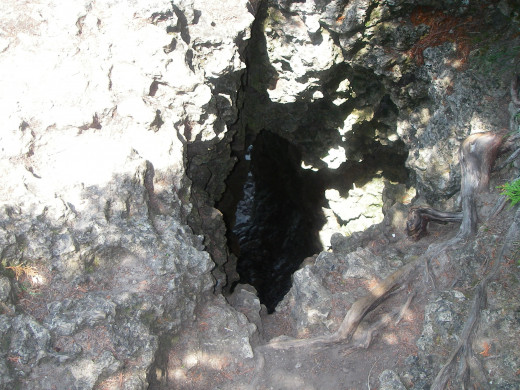
Holes in ground are a characteristic of terrain consisting of sedimentary rock. Sedimentary rocks also give us caves and caverns, underground water channels, brooks and streams.
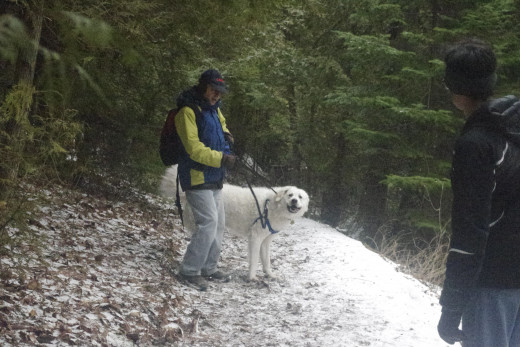
As a family, we love long-distance hiking, and generally, our Kuvasz boy loves it even more. What we have discovered is that with K2 along, we are not exploring for the sake of exploration alone. He has made us connect with nature at a micro level.
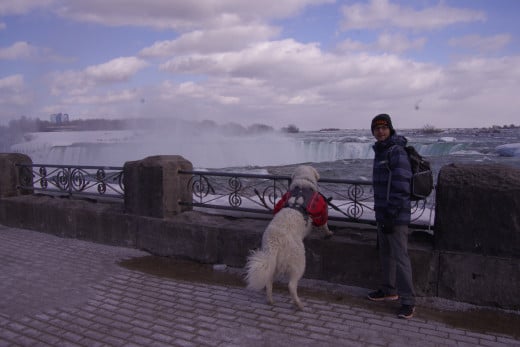
I am describing here, in anecdotal terms, our spring season experience with nature at a close range. You can try to have similar connection with the nature and / or peoples and their cultures, history, architecture, etc. during your spring travels.
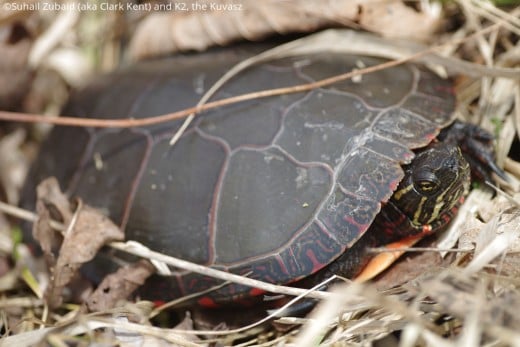
Know the rock you are hiking on
Sedimentary rocks are formed on the surface of the earth, either in water or on land. They are called secondary rocks, because they often result from the accumulation of small pieces broken off from pre-existing rocks.
The two other major rock types are called Igneous rock and Metamorphic rock.
Igneous rocks get their name from the Latin word ignis, meaning “fire.” They form from volcanic magma when a volcano erupts and are also referred to as volcanic rocks.
Metamorphic rocks are formed when sedimentary and igneous rocks are subjected to more intense pressure or heat and as a result underwent a complete change. Metamorphic rocks form deep within the Earth’s crust. The process of metamorphism does not melt the rocks, but transforms them into other rocks which are denser and more compact.
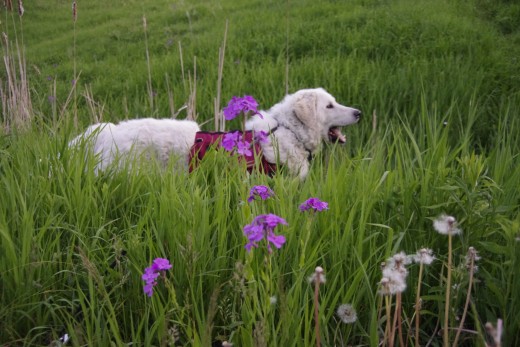
Manhattan and roots
Load bearing capacity of soil with igneous rock underneath is high, it is stable, and it hardly settles under heavy loads. High rises are usually constructed on igneous rock at a reasonable depth from the surface. Manhattan, New York has high rises in mid-town and then the down-town only because of the rock being close to the surface at those two locations.

If roots of trees are running all along the surface of the ground, it means that the soil is thin and that the rock is running close to the surface. Rocky surfaces in early spring present treacherous situation for hiking. They are normally wet and slippery. You have to tread carefully. A slip can easily cause severe injury.
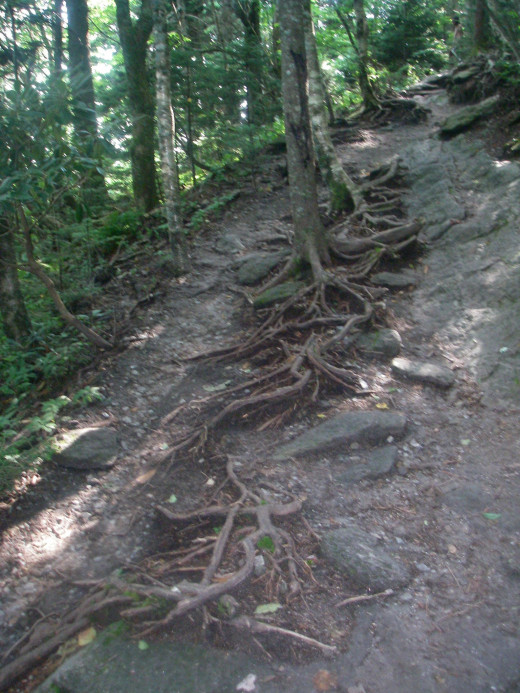
Know the soil type you are walking on
Hiking in early spring season is tricky also because we have intermittent patches of slippery dirt mixed ice that has been left over by melting snow above, clay and organic clay. The melting snow water tends to stay on the surface of clay, because the soil is still semi-frozen and already waterlogged from whatever quantity of water it can absorb. Organic clay originates from dying vegetation and results in muck that sticks to dogs’ paws and your shoes making it even more difficult to walk. Clay soil settles extremely slowly – over a period of 25 to 100 years.
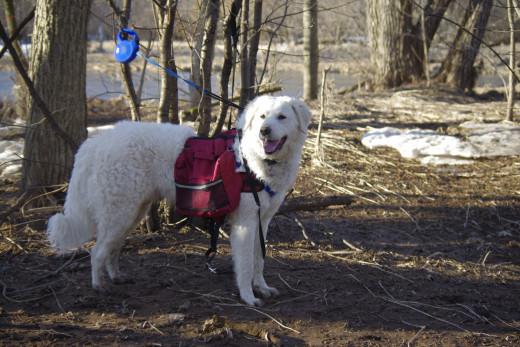
Remember Leaning Tower of Pisa? The Tower was leaning because it was built on clay soil, which settled slowly under its weight.
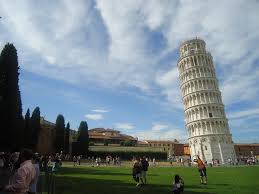
Know that water bodies may change their character
Melting snows in spring can turn a minor creek to a flooding giant within the course of one long hike and you can get trapped on one side. It happened to K2 and us during an adventurous hike at Rouge Park. I did remember Les Stroud’s advice from his book ‘The will to live’. “Follow a river upstream in a situation like this”. Every swollen river will ultimately become friendly enough to cross easily some distance upstream.
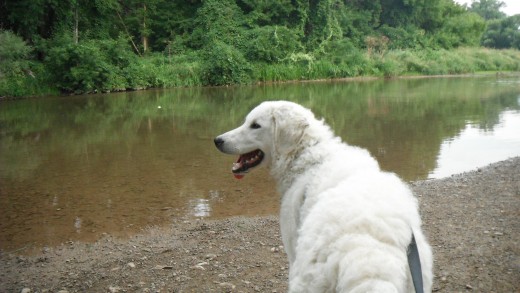
Remember the features of the land you tread on
On one occasion on a section of Bruce Peninsula National Park, we decided to follow a deer trail in the forest and regretted doing it. Deer trails notoriously begin and end abruptly. When the trail ended, we wanted to return, only to find that we had lost our bearings because there were many other deer trails joining the one we were on that we had not noticed while following it.
We should have remembered Ed Viesturs advice in his book ‘K2: Life and death on world’s most dangerous mountain’ on looking back and memorizing the landscape features every now and then for making return journey easier.
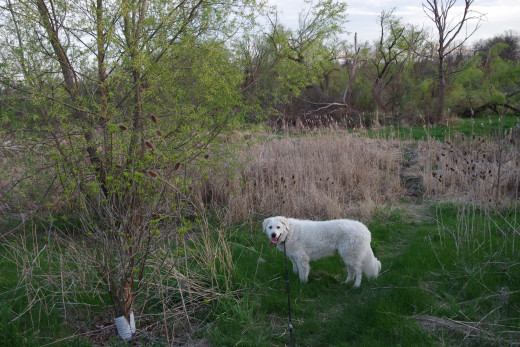
beware of bears in spring season
Early spring to mid-spring, depending upon the region, in the bear country can also be life threatening. Both grizzlies and black bears are reported to initiate attacks during this time of the year. The reason is that they have just come out of hibernation and they need to fill in their depleted energy resources quickly.
The book ‘The Black Grizzly of Whiskey Creek’ by Sid Marty provides a tragic account of a grizzly bear who fatally mauled one of its victims and brutally injured two others after coming out of its hibernation.
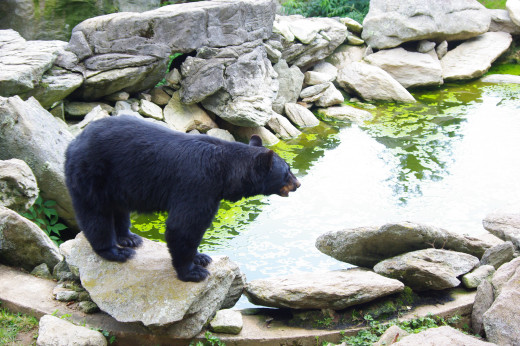
Remember the primal fear
I read it somewhere that at the beginning, the first humans (Homo Sapiens and Homo Neanderthalensis) were a frightened bunch, scared of falling prey to carnivorous beasts. Researchers say that the reason why we are afraid of the dark and of terra incognita is because of this primal fear. It was not until our ancestors found a strategic friend in first dog like wolves (or wolf like dogs) that they gained confidence to step out of their caves boldly. With the presence of the ‘dog to be’ at their sides, they had protection available while resting in their shelters during the dark and help available during the hunt during the day.
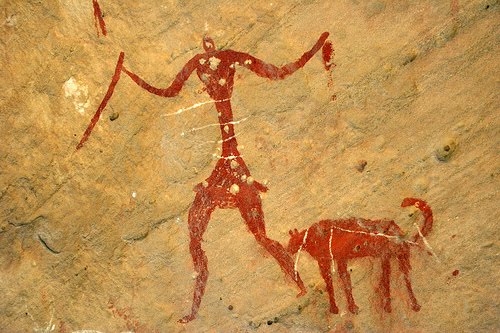

I’m so glad you commented on my blog — because it led me to discover yours! Thank you for this wonderful stroll through your beautiful corner of the world. I loved reading your musings on how to navigate different kinds of soils and terrain. Maybe I’d picked up some of these tips through instinct (or by falling on my butt) but it’s really interesting to know the geology behind why roots grow like that, for instance. And what a sweet angle you have, too, to feature K2 in your adventures! He is gorgeous. I very much look forward to seeing where you take us next.
LikeLike
Thank you very much indeed, Heide! I think I am learning a lot from your blogs though.
LikeLike